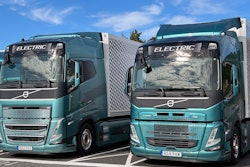Diesel engines have carried the bulk of North America’s freight my entire life. Estimates in 2020 were that diesel trucks carried more than 65% of freight by weight and exceeded 72% by value according to the Bureau of Transportation Statistics (BTS), as NACFE reported recently in Intermodal & Drayage: An Opportunity to Reduce Freight Emissions. Diesel powered rail and diesel powered ships carried their share. Whatever your belief about the future of diesel, there should be no question that diesel has been key to everyone’s way of life. Two silver linings of the pandemic were public realization that trucking is essential to everyone, and truck drivers are heroes.
The ongoing challenge to diesel’s dominance is that, quite frankly, it’s not very efficient at what it does. The Department of Energy (DOE) has been funding research for decades to find ways to improve the efficiency of diesel engines. For trucks, efficiency is the measure of how well energy is used to move a vehicle, and typically that is talked about as miles travelled per gallon of diesel fuel.
A gallon of diesel is storing chemical energy that the diesel engine converts into motion at the wheels of a truck. For decades, diesels converted less than one-third of that energy into motion. The rest was wasted as heat, usually out the exhaust stacks, or through friction between mechanisms.
Think about that: for every gallon of diesel purchased, two-thirds of it is thrown away. That’s like going to dinner, ordering a filet mignon and getting a hamburger on your plate. And we’ve been happy with that for decades.
Energy efficiency also directly relates to operating cost per mile and to environmental emissions per mile – greater efficiency means less cost per mile and less emissions per mile.
NACFE recently published the report SuperTruck 2: Empowering Future Trucking where five OEM teams each demonstrated what was needed to get to a 55% efficient diesel engine. Current production diesel engines operate in the mid-40% efficiency range. Getting to 55% with diesel is significant progress, if it eventually makes it into production trucks. This step has taken 15 years, since OEMs engaged in SuperTruck 1 and 2 programs first got involved in 2009.
In that same 15-year time frame, battery electric vehicles have evolved from speculation on paper to real production trucks from these same OEMs. Some have also launched efforts in hydrogen fuel cell vehicles. Several start-ups in truck manufacturing, none that existed in 2009, have joined the market, too.










